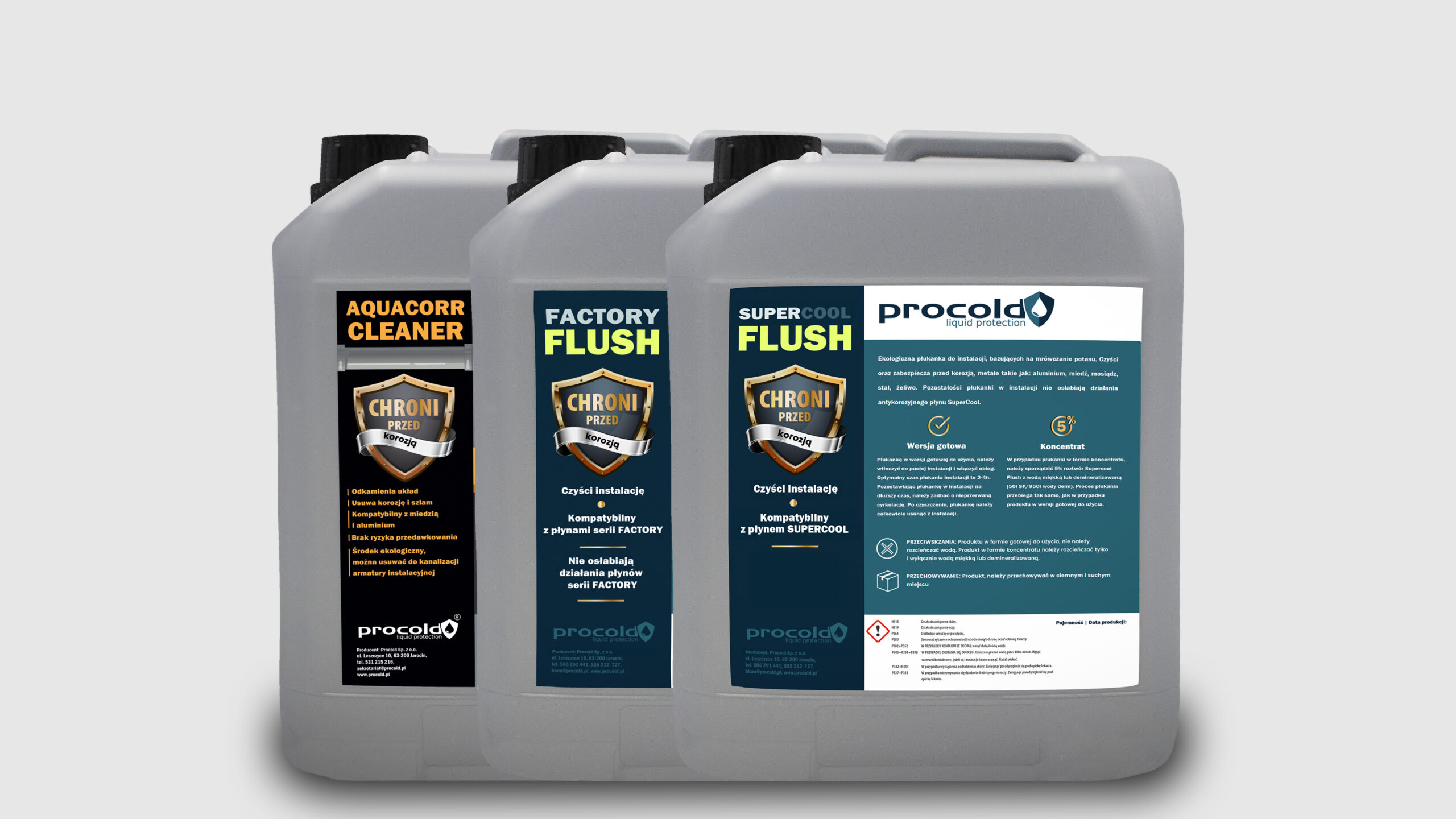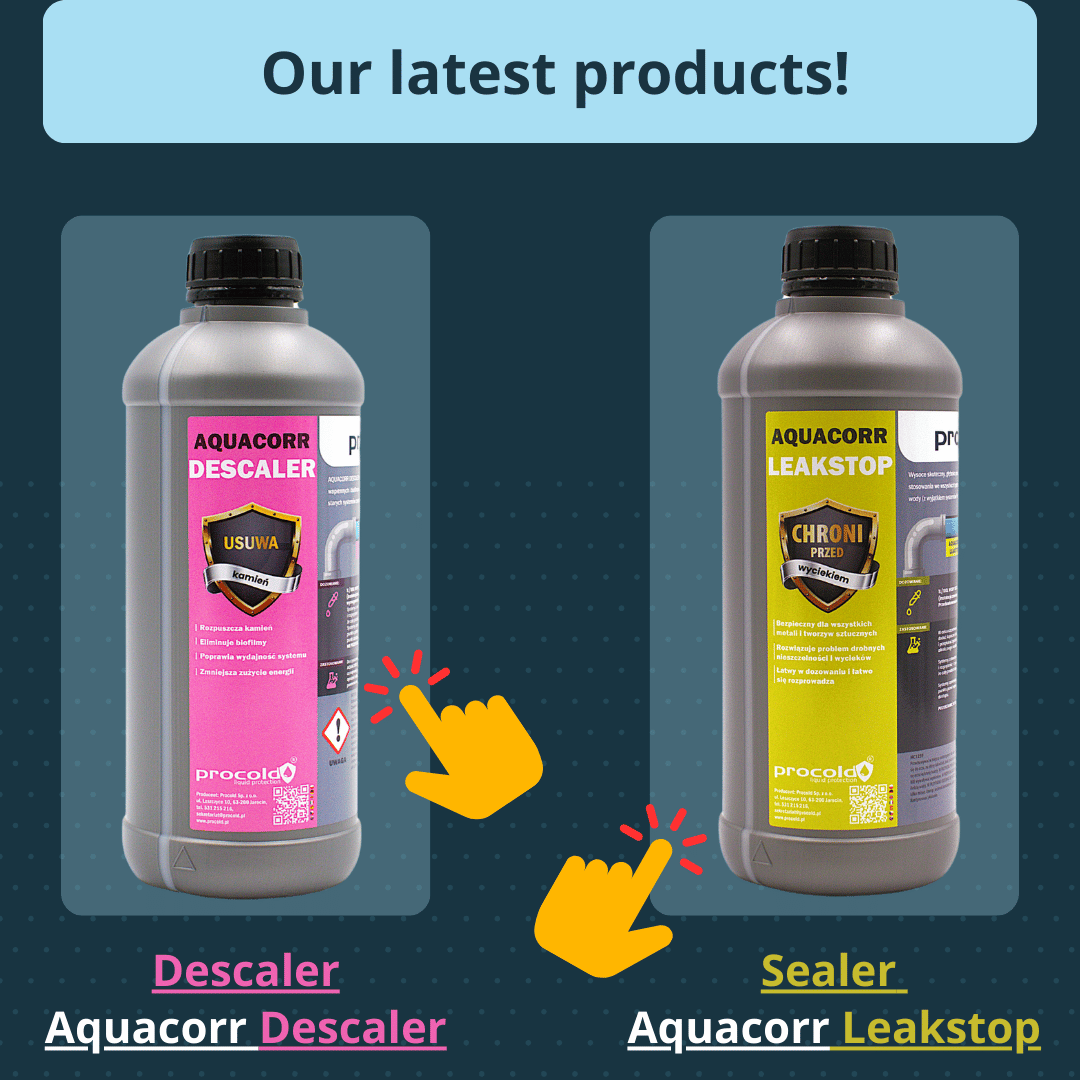
Why is rinsing the installation before filling it with antifreeze so important?
In today’s rapidly evolving world of refrigeration and heating technology, antifreeze fluids play a crucial role in maintaining efficiency and ensuring the safety of installations in extreme temperatures. However, the effectiveness of these glycol-based fluids depends not only on their quality but also on the condition of the installation into which they are introduced. Here, the process of rinsing the installation before filling it with antifreeze emerges as an essential preparatory step aimed at ensuring the optimal operation of the system.

The importance of cleanliness of the installation
Rinsing the installation is intended to remove any contaminants such as rust, deposits, residues of old fluid, and microorganisms that can negatively affect the effectiveness of the antifreeze fluid. These contaminants can lead to clogging, corrosion, and even damage to system components, thereby reducing heat exchange efficiency and increasing the risk of failure. Furthermore, we should not only focus on rinsing previously operating installations. It is important to flush even completely new systems before filling them with glycol-based fluid. During the assembly/construction of the entire installation, tiny contaminants are also generated, which will adversely affect the operation of the installation.

The benefits of flushing
Flushing the installation before introducing new fluid not only increases its effectiveness but also prolongs the lifespan of the entire system. Removing contaminants helps prevent corrosion, clogging, and other issues that could lead to costly repairs. Additionally, a clean installation allows the antifreeze fluid to distribute evenly and provide more effective protection against extreme temperatures. This also translates to lower operating costs.
Potential hazards of neglecting flushing

Neglecting the flushing process can result in a range of operational issues, from reduced energy efficiency to total system failure. Sediments and contaminants can create barriers for the antifreeze fluid, hindering its distribution and protective action. This, in turn, leads to uneven system operation and increases the risk of damage.
How to properly conduct flushing
For the flushing process to be effective, it’s essential to follow the recommendations provided by the installation and antifreeze fluid manufacturer. This typically involves using specialized fluids such as Aquacorr Cleaner, Factory FLUSH, or Supercool FLUSH. Information about these products can be found on our website. It’s important to ensure that the entire system is thoroughly flushed and dried before introducing the antifreeze fluid.

In summary, flushing the installation before filling it with antifreeze is an extremely important step in maintaining optimal performance and safety of refrigeration and heating systems. The cleanliness of the installation is crucial for the effectiveness of the antifreeze fluid, and neglecting this process can lead to a variety of operational problems and costly repairs. Therefore, it’s important to follow the manufacturer’s recommendations and conduct the flushing process meticulously to ensure long-term and trouble-free operation of the system. Investing in flushing the installation translates to lower operating costs, as well as increased safety and comfort in using the installation.
Articles

Impact of antifreeze quality on HVAC systems
Antifreeze fluids play a key role in HVAC systems. They are not only a medium that transports heat […]
29/11/2024
Modern flushing and filling station – your partner in keeping your installation in perfect condition
Nowadays, the efficiency and reliability of heating, cooling and HVAC systems are crucial for both residential and industrial […]
15/11/2024
What are the prospects for the development of antifreeze fluids in the context of increasing energy requirements?
In the face of global change and increasing energy demands, the refrigeration and heating industry is facing new […]
23/08/2024
Why can’t corrosion inhibitors be added to contaminated HVAC systems?
We often encounter questions from customers who wonder whether corrosion inhibitors can be added to HVAC systems that […]
01/08/2024
Use of glycol-based antifreeze in server room cooling
Server room cooling is a key element of IT infrastructure management, ensuring reliable operation of servers and other […]
12/07/2024
Use of antifreeze fluids in geothermal installations
Geothermal systems are an advanced technology that uses the earth’s natural heat to heat and cool buildings. A […]
06/06/2024
What to look out for when buying glycol-based antifreeze for heating, sanitary and cooling systems?
Glycol-based antifreeze is a key element in the effective operation of heating, sanitary and refrigeration systems, especially in […]
09/05/2024
Advantages and applications of antifreeze fluids in cooling systems: Key to efficiency and reliability
18/04/2024








